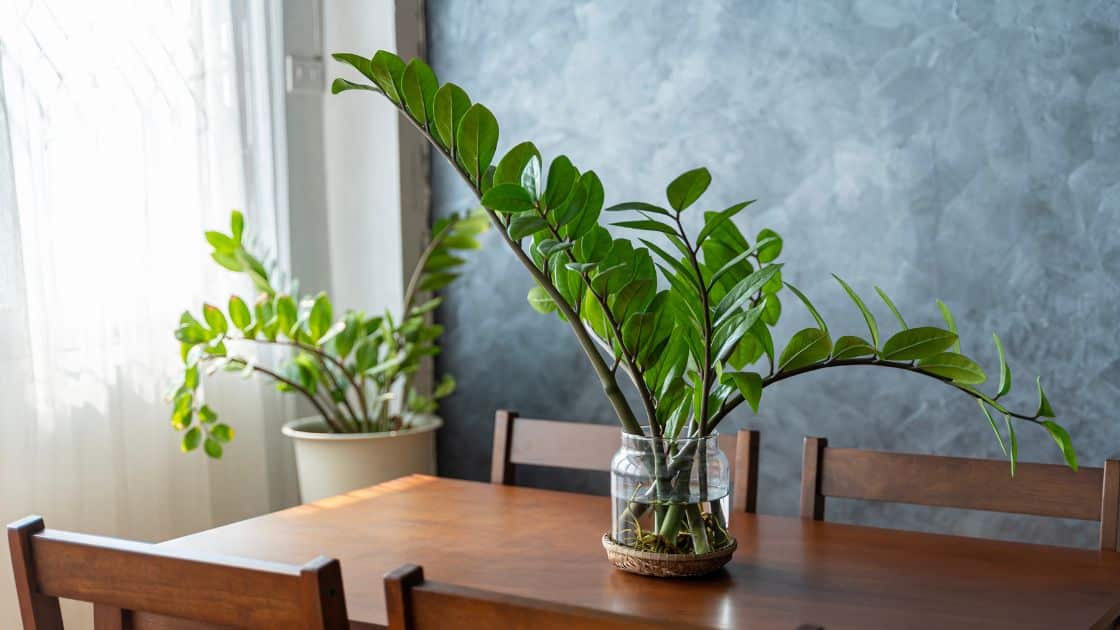Are you looking for a low-maintenance, stylish addition to your indoor space? Look no further than the ZZ plant! This hardy and visually stunning plant has become a favorite among plant enthusiasts due to its ability to thrive in various conditions and its unique foliage. In this comprehensive guide, we will explore everything you need to know about the ZZ plant, including care tips, propagation techniques, and common issues you may encounter. So, let’s dive in and discover the wonders of the ZZ plant!
ZZ Plant: A Closer Look
The ZZ plant, scientifically known as Zamioculcas zamiifolia, is unlike many other indoor plants. It features thick, glossy, dark green leaves that are often described as “feather-like.” These leaves grow in pairs and can reach a length of up to 40 inches, adding an eye-catching element to any interior. The plant is a native of Eastern Africa, specifically regions of Kenya and Zanzibar, where it thrives in the warm and dry climate. Due to its adaptability, the ZZ plant has gained popularity worldwide as an ideal choice for indoor cultivation.
Growing Conditions
1. Light Requirements
One of the key selling points of the ZZ plant is its ability to tolerate a wide range of light conditions. It can thrive in both bright, indirect light and low light environments, making it an excellent choice for those with limited access to natural sunlight. However, it’s important to note that the ZZ plant may grow more slowly in low light situations.
2. Temperature and Humidity
The ZZ plant is known for its ability to withstand variable temperature conditions. It prefers temperatures between 65-75°F (18-24°C) but can tolerate slightly cooler or warmer conditions. Additionally, it’s adaptable to average indoor humidity levels, making it suitable for various climates and households.
3. Watering
One of the most significant advantages of the ZZ plant is its drought tolerance. Overwatering can lead to root rot, so it’s crucial to allow the soil to dry out between waterings. Aim for watering the ZZ plant every 2-3 weeks, ensuring the top few inches of soil are completely dry before each watering session. Remember, it’s better to underwater than to overwater this resilient plant.
Read more:
Propagation: Growing Your ZZ Plant Family
If you’re interested in expanding your ZZ plant collection, propagation is a simple and cost-effective method. The most common way to propagate ZZ plants is through leaf cuttings. Here’s a step-by-step guide on how to do it:
- Choose a healthy, mature ZZ plant leaf.
- Cut the leaf into sections, each containing at least one leaflet.
- Allow the cuttings to dry out for a couple of days to minimize the risk of rot.
- Fill a small pot with well-draining potting mix.
- Plant the leaf cuttings in the pot, burying them about one inch deep.
- Place the pot in a warm, bright location but avoid direct sunlight.
- Maintain slightly moist soil and mist the cuttings occasionally.
Within a few weeks, you should start to see new growth emerging from the cuttings. Congratulations – you’ve successfully propagated your ZZ plant!
Common Issues and Troubleshooting
1. Yellowing Leaves
If you notice the leaves of your ZZ plant turning yellow, it is usually a sign of overwatering. Remember to allow the soil to dry out between waterings and adjust your watering schedule accordingly.
2. Leaf Drop
Leaf drop can occur when the ZZ plant experiences drastic temperature changes or lack of light. Ensure your plant is placed in an area with stable temperature and receives enough indirect light to prevent leaf drop.
3. Pests
While the ZZ plant is generally pest-resistant, occasionally, it may attract problematic insects such as mealybugs or spider mites. If you observe signs of infestation, treat your plant with an organic insecticidal soap or wipe the leaves with a damp cloth to remove the pests.
Conclusion
The ZZ plant is a remarkable addition to any indoor space. With its resilience, striking appearance, and ability to adapt to various conditions, it has earned its spot as a favorite choice for plant enthusiasts. Whether you’re a seasoned plant parent or a beginner, the ZZ plant is a low-maintenance option that will bring greenery and style to your home or office. So go ahead, embrace the beauty of the ZZ plant and enjoy the benefits of owning this remarkable indoor companion.





